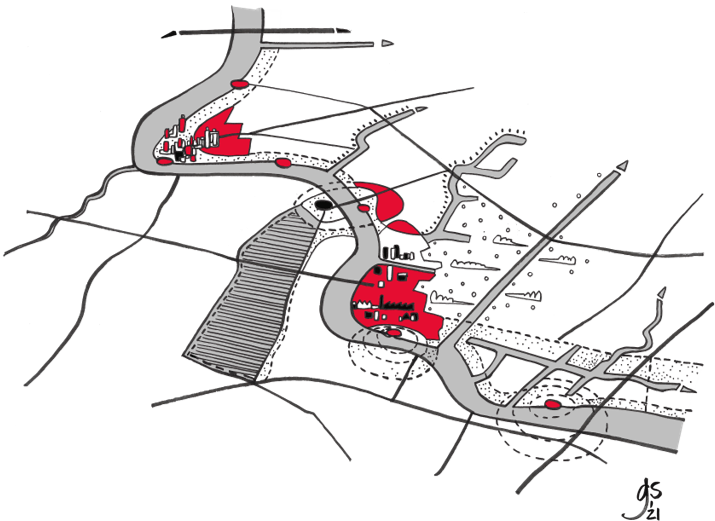3.1.1 What is module 3 of Building Inclusive Cities about?
Course subject(s)
3. The Region

Illustration by G. Sanders, CC BY-NC-ND 4.0
The regional, city and neighbourhood scales
In the next three modules you will be introduced to the multiple relationships between the physical form of cities and the creation of an inclusive living environment on three different urban scales: regional, city and neighborhood. Inclusive cities must provide all citizens with equal access to public resources, including opportunities to participate in the planning and governance of space.
Based on case studies, every module will give you an insight into specific design concepts and provide you with analysis methods that will enable you to assess an urban environment’s potential for inclusiveness. You will learn how regional planning and design can affect the distribution of public infrastructure. You will analyze city districts’ morphology e.g. in terms of connectivity and the centrality of uses. Finally, you will acquaint yourselves with criteria that guide the design of inclusive public spaces, their program, and their use.
The Regional Scale
On the regional scale we will introduce design principles and show how these may influence concrete proposals at the local level. Even though the term ‘regional design’ may seem overly ambitious or even impossible, examples are given that explain the scope of the term and its importance in policy making and design practice. With the help of practical examples you will become acquainted with long term effects of regional planning, the importance of developing and evaluating scenarios and other aspects of regional design processes.

Building Inclusive Cities: Tackling Urban Inequality and Segregation by TU Delft OpenCourseWare is licensed under a Creative Commons Attribution-NonCommercial-ShareAlike 4.0 International License.
Based on a work at https://online-learning.tudelft.nl/courses/building-inclusive-cities-tackling-urban-inequality-and-segregation/



